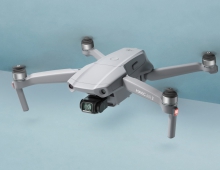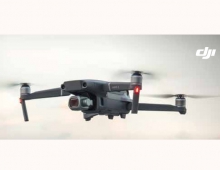
U.S. Department of Transportation Proposes Rule on Remote ID for Drones
The U.S. Department of Transportation’s Federal Aviation Administration (FAA) has announced a proposed rule that would continue the safe integration of Unmanned Aircraft Systems (UAS), commonly called drones, into the U.S. airspace by requiring them to be identifiable remotely.
“Remote ID technologies will enhance safety and security by allowing the FAA, law enforcement, and Federal security agencies to identify drones flying in their jurisdiction,” said U.S. Transportation Secretary Elaine L. Chao.
The FAA will seek input on the Notice of Proposed Rulemaking (NPRM) for Remote Identification (Remote ID) of UAS that has been placed on display at the Federal Register. In the coming days, it will be accompanied by a 60-day comment period to receive public feedback and help the FAA develop a final rule to enhance safety in the skies over the U.S.
The rules would come into full force three years after being finalized.
Drones are a fast-growing segment of the entire transportation sector – nearly 1.5 million drones and 160,000 remote pilots are registered with the FAA.
Under the FAA proposal, if drone operators want to operate freely, they would have to both broadcast their identity on a radio frequency that can be monitored nearby and simultaneously upload the information via the internet.
In that way, other nearby drones and aircraft can steer clear and local police equipped with tracking devices could identify rogue operators. At the same time, the devices could be monitored from a remote, central system.
Drone users can choose a more limited option of uploading the information to the internet only, but they would be restricted to flying within 400 feet of the operator.
Existing drones wouldn’t have to install tracking equipment retroactively, but would in most cases be banned from operation after the rule becomes law. Starting two years after the regulation takes effect, new unmanned devices sold would have to have approved tamper-resistant tracking devices.
These efforts lay the foundation for more complex operations, such as those beyond visual line of sight at low altitudes, as the FAA and the drone industry move toward a traffic management ecosystem for UAS flights separate from, but complementary to, the air traffic management system.
The proposed Remote ID rule would apply to all drones that are required to register with the FAA (recreational drones weighing under 0.55 pounds are not required to register), as well as to persons operating foreign civil UAS in the U.S.





















